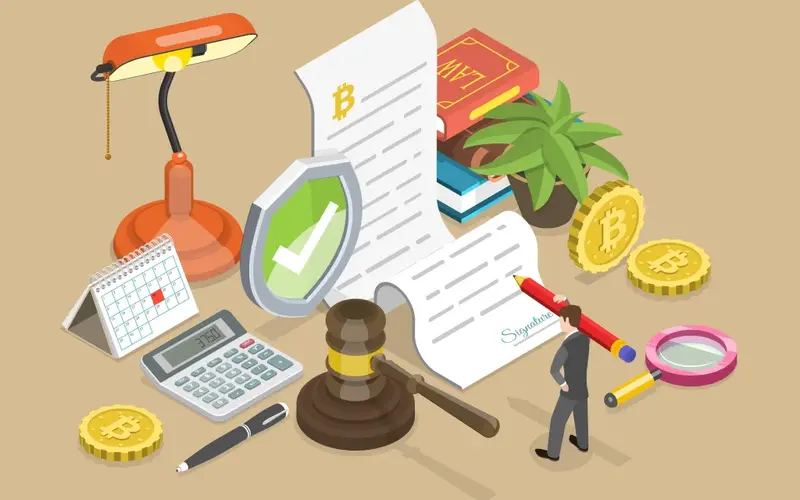
Phishing is one of the most common and effective cyberattacks, and it has become a major threat in the blockchain and cryptocurrency space. Unlike traditional finance, where stolen funds can sometimes be reversed, transactions on a blockchain are irreversible and final, making the consequences of a successful phishing attack catastrophic.
What is Phishing in the Context of Blockchain?
Phishing is a type of social engineering attack where a scammer impersonates a legitimate entity to trick a user into revealing sensitive information, such as their private key, seed phrase, or wallet password. Once the scammer has this information, they can drain the user’s wallet and steal all of their digital assets.
Common Phishing Tactics
Scammers use a variety of sophisticated techniques to deceive their victims.
- Fake Websites: This is the most prevalent form of blockchain phishing. Scammers create a fake website that is a near-perfect replica of a legitimate cryptocurrency exchange, wallet provider, or a popular DeFi protocol (dApp). The URL will often be slightly misspelled (e.g.,
coiinbase.cominstead ofcoinbase.com) or use a different domain ending. The user, thinking they are on the real site, enters their credentials, which are then stolen. - Malicious DMs and Emails: Scammers often send unsolicited direct messages (DMs) on social media platforms (like Discord, Telegram, or X) or emails that appear to be from a legitimate service. These messages often create a false sense of urgency or fear, claiming that a user’s account is at risk and they must click a link to “verify their identity” or “secure their funds.”
- Giveaway and Airdrop Scams: Scammers prey on the desire for “free money.” They will announce a fake giveaway or airdrop from a well-known project or celebrity and post a link to a fraudulent website. When the user connects their wallet to the site to claim the “free tokens,” they unknowingly grant the scammer permission to drain their wallet.
- Wallet-Draining Smart Contracts: This is a more technical form of phishing. A scammer will create a malicious smart contract and embed it on a seemingly legitimate website. When the user clicks to approve a transaction, the contract code actually contains a function that gives the scammer unlimited spending access to their assets, allowing them to drain the user’s wallet at any time.
- Address Poisoning: In this attack, a scammer sends a small, zero-value transaction to a victim’s wallet. The scammer’s wallet address is carefully crafted to have the same first and last few characters as a legitimate address the victim has used in the past. When the user goes to send a transaction, they may copy the scammer’s address from their transaction history instead of the correct one, leading to the loss of their funds.
How to Protect Yourself
Protecting yourself from phishing is primarily about education and vigilance.
- Never Share Your Seed Phrase: Your seed phrase is the master key to your wallet. No legitimate project, exchange, or customer support representative will ever ask you for it. Anyone who does is a scammer.
- Double-Check URLs: Always verify that you are on the correct, official website. Bookmark the URLs of your favorite services and never click on links from unsolicited emails, texts, or social media messages.
- Be Skeptical of Unsolicited Offers: Treat all unsolicited DMs, emails, and offers with extreme caution. If something sounds too good to be true, it almost certainly is.
- Use a Hardware Wallet: A hardware wallet (cold wallet) is the gold standard for security. It stores your private keys offline, so even if you fall for a phishing scam, the scammer cannot gain access to your assets without a physical confirmation from the device.
- Review Transaction Details: Before you sign a transaction with your wallet, take a moment to understand what you are signing. Your wallet will show you the address you are sending to and the permissions you are granting. If the details do not match your expectations, cancel the transaction immediately.
What to Do If You’ve Been Scammed
If you believe you have been a victim of a phishing attack, you must act quickly.
- Secure Your Remaining Funds: If you still have access to the compromised wallet, transfer any remaining funds to a new, secure wallet immediately.
- Document Everything: Gather all the evidence you have, including the transaction IDs, the scammer’s wallet address, and screenshots of your conversations.
- Report the Incident: File a complaint with law enforcement agencies like the FBI’s Internet Crime Complaint Center (IC3). You can also report the wallet address to on-chain analytics firms and exchanges, which may be able to flag the address and prevent the scammer from cashing out their funds.
While the irreversible nature of blockchain transactions makes recovery difficult, taking immediate action can help to prevent further losses and assist in a potential investigation.



